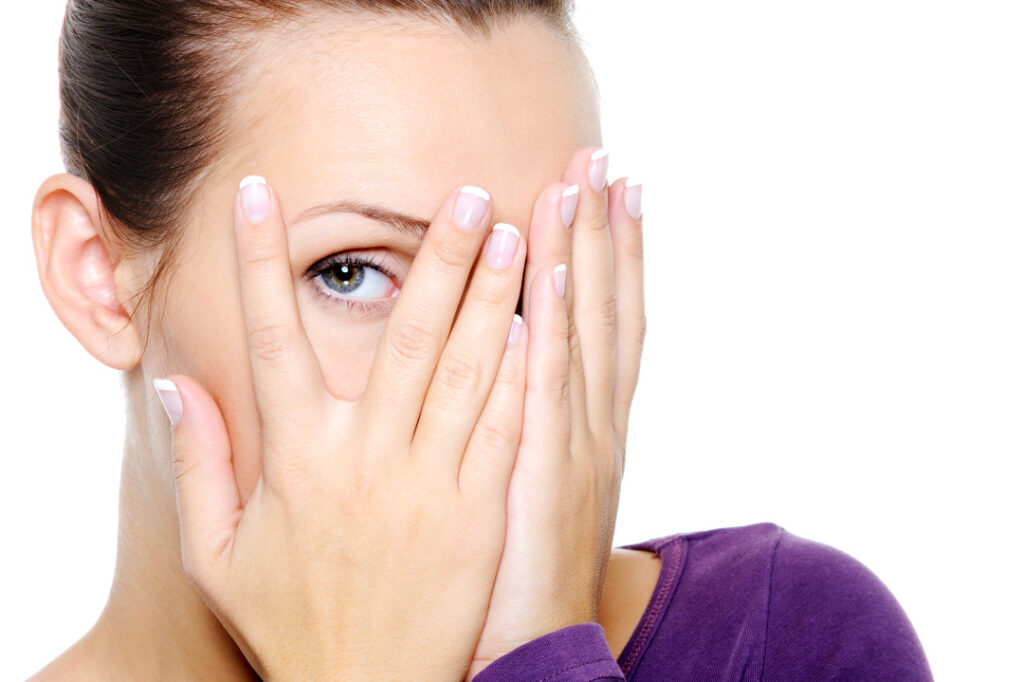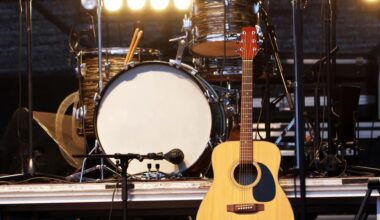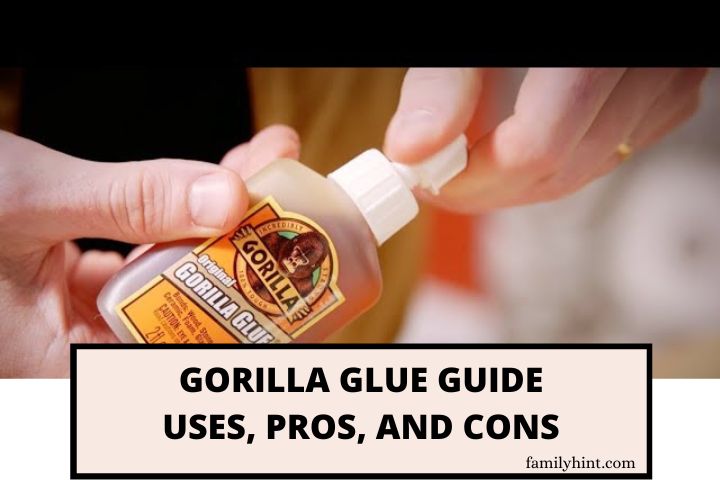
Hooded eyelids, also known as ptosis or droopy eyelids, can be a frustrating aesthetic concern for many individuals. This condition occurs when excessive skin on the upper eyelid creates a heavy, hood-like appearance, potentially resulting in a tired or aged look. While certain individuals may have naturally hooded eyelids, they can also develop due to aging, genetics, or medical conditions. Fortunately, several effective treatment solutions are available for those seeking to address this issue and rejuvenate their appearance.
In this article, we will explore the causes of hooded eyelids and the effective treatment solutions available. From surgical options like blepharoplasty to non-invasive techniques such as using hypoallergenic tapes or makeup tricks, various options can help individuals regain a more youthful and refreshed look.
What Cause Hooded Eyes?
People born with hooded eyes may have a different eye shape than others, and those who develop hooded eyes later in life may notice changes in the skin around their eyes. Hooded eyes can result from various factors, and they may be present from birth or develop later in life. Common causes and contributing factors include:
- Genetics: Genetics plays a significant role in the presence of hooded eyes, and if your parents have this eye shape, there’s a strong chance that you may also inherit it.
- Aging: The natural aging process can lead to a loss of skin elasticity, causing the skin around the eyes to sag and create hooded eyelids.
- Muscle Weakness: Weakness in the muscles that lift the eyelids, known as ptosis, can contribute to hooded eyes.
- Excessive Sun Exposure: Prolonged exposure to UV radiation can accelerate the breakdown of collagen and elastin in the skin, leading to hooded eyelids.
- Tissue Changes: Changes in the underlying tissue and fat distribution around the eyes can also result in hooded eyes.
Characteristics of Hooded Eyelids

Hooded eyes are a normal hereditary trait, often passed down from one’s parents. They are characterized by an excess of skin and tissue around the eyes, which causes the upper eyelids to appear partially or entirely covered. This excess tissue can lead to hooded eyes, known as ptosis or droopy eyes. Hooded eyelids are often associated with a tired-looking appearance as they can make the eyes look smaller and less open. Sometimes, the sagging in the upper eyelids can obstruct one’s vision. The development of hooded eyes can affect both eyes and individuals with slightly hooded eyelids over time.
Symptoms of Droopy Eyes
Symptoms associated with hooded eyes may include:
- Excess skin covering the upper eyelid
- Difficulty applying eyeshadow or eyeliner
- Eyes appear smaller than they are
- Eyes looking tired or aged appearance
- Potential vision obstruction in severe cases
How Hooded Eyes Affect Vision
Hooded eyes can affect vision to varying degrees. In some cases, the excess skin can partially obstruct the upper field of vision, making individuals need to lift their eyebrows or tilt their heads backward to see clearly. This obstruction can be more pronounced when the eyes are open wider. While only some people with hooded eyes experience vision problems, others may find it bothersome. However, it’s important to remember that not all hooded eyes significantly impact vision, and many people with this eye shape adapt to it without difficulty.
How to Determine If You Have Hooded Eyes?
To determine if you have hooded eyes, look in the mirror with your eyes open. Observe the shape of your eyes and check if excess skin is covering the upper eyelid crease. If you notice that the fold of skin on your upper eyelid covers a portion of your mobile eyelid or if your eyelid crease is not visible when your eyes are open, you likely have hooded eyes. Additionally, you can gently lift your eyebrows to see if the excess skin on the upper eyelid becomes more prominent, further confirming the presence of hooded eyelids.
What Are Some Effective Ways to Lift Hooded Eyes?

Eyelid Surgery (Blepharoplasty)
Eyelid surgery, or blepharoplasty, is a frequently performed cosmetic procedure aimed at addressing hooded eyes and rejuvenating the eye area. This surgical intervention involves the removal of surplus skin and, in some cases, excess fat from the upper eyelids.
The primary objective is to create a more defined and open-eye appearance. However, it is crucial to consult with a skilled cosmetic surgeon to assess the appropriateness of this procedure and understand the associated risks. Here are some key points about eyelid surgery:
Removal of Excess Skin and Fat: Eyelid surgery entails the surgical removal of extra skin and, when necessary, fat deposits from the upper eyelids. This process helps eliminate drooping or sagging skin, restoring a more youthful and refreshed look to the eyes.
Correction of Severe Hooded Eyelids: Eyelid surgery is particularly effective in addressing severe cases of hooded eyelids. Hooded eyelids occur when excess skin and fat accumulate on the upper eyelids, causing them to appear heavy and limp. By removing this excess tissue, the surgery can provide a more aesthetically pleasing and rejuvenated appearance.
Improvement in Vision: In some instances, severe hooded eyelids can obstruct a person’s field of vision. Eyelid surgery can alleviate this issue by removing the excess skin and restoring a wider field of vision. This functional improvement, in addition to the cosmetic benefits, can significantly enhance a person’s overall quality of life.
Consultation with a Qualified Surgeon: Before opting for eyelid surgery, it is essential to consult with a qualified and experienced cosmetic surgeon. During the consultation, the surgeon will assess your concerns, evaluate your eyelids’ condition, and discuss your goals. They will also explain the procedure’s risks, benefits, and potential outcomes.
Recovery and Results: Following eyelid surgery, there will be a period during which swelling and bruising may occur. It is essential to follow post-operative care instructions provided by your surgeon to ensure optimal healing and minimize complications. The final results become more apparent as swelling subsides, revealing a more youthful and refreshed appearance.
Non-Surgical Treatments for Hooded Eyes
Non-surgical treatments can help improve the appearance of hooded eyes without requiring invasive procedures. Some popular non-surgical options include:
Eyelid Tape: Eyelid tape is a temporary solution that helps lift the eyelid using adhesive tape. It is applied to the upper eyelid to create a more defined crease, making the eyes appear less hooded. This method can be effective for special occasions or when a temporary change is desired. However, it is not a long-term solution and may not provide consistent results.
Botox Injections: Botox is a neuromodulator that can be used to relax the muscles responsible for hooded eyes. By injecting Botox into specific areas around the eyes, it can reduce the appearance of wrinkles, smooth the skin, and provide a subtle lift to the brows and upper eyelids. This treatment can create a more open and refreshed look without surgery. Results are temporary and typically last for several months, requiring repeat treatments for maintenance.
Dermal Fillers: Dermal fillers can add volume to hollow areas of the eyelids, reducing the appearance of hooded eyes. A skilled practitioner can create a smoother transition between the upper eyelid and brow area by injecting fillers strategically. This can help improve the contour and appearance of the eyes. Results with dermal fillers are temporary and may last several months to a year, depending on the type of filler used.
Makeup Techniques: Using specific makeup techniques enhances the eyes and creates the illusion of a more defined eyelid crease. Applying eyeshadow strategically, using eyeliner techniques that lift the eyes, and curling the lashes can make hooded eyes look more youthful and awake. Brow shaping and microblading can also enhance the appearance of hooded eyes.
Eye Exercises: Regularly practicing eye exercises and facial massages can help strengthen the muscles around the eyes and improve their appearance. These exercises can include eyelid lifts, eyebrow raises, and eye muscle stretches. It is crucial to perform these exercises cautiously and consult a professional if you have any concerns.
Home Remedies: Various home remedies can be tried to alleviate the appearance of hooded eyes. Applying cold cucumber slices, tea bags, or chilled spoons on the eyelids can reduce puffiness and tighten the skin temporarily. Additionally, using firm eye creams containing ingredients like retinol or peptides can improve the appearance of hooded eyes.
Famous Celebrities with Hooded Eyes
Hooded eyes are a common eye shape, and many well-known celebrities have also embraced and loved their unique features. Some celebrities known for their hooded eyes include Blake Lively, Jennifer Lawrence, Emma Stone, and Taylor Swift. These stars have proven that hooded eyes can be beautiful and enhanced with the right makeup techniques and styling choices.
Celebrities with hooded eyes often work with professional makeup artists who know how to accentuate their eye shape. They use specific makeup techniques, like contrasting eyeshadow colors and eyeliner, to create the illusion of a more lifted and defined crease. They also experiment with different hairstyles and eyebrow shapes to complement their eyes.
Frequently Asked Questions
Q: What are the treatment options for hooded eyes?
A: There are several treatment options available for hooded eyes. Non-surgical treatments include using makeup techniques to create the illusion of a more lifted eyelid, such as applying a contrasting eyeshadow or using a technique called “tightlining”. Surgical options include eyelid surgery, also known as blepharoplasty, which involves removing excess skin and fat to lift and reshape the eyelid.
Q: What is the best treatment for hooded eyes?
A: The best treatment for hooded eyes depends on individual preferences and the severity of the hooding. Non-surgical techniques can be effective for mild cases, while more significant hooding may require surgical intervention. It’s advisable to consult with a qualified cosmetic surgeon or ophthalmologist to determine the best treatment option for you.
Q: How can I fix hooded eyes?
A: There are various ways to address hooded eyes. As mentioned earlier, non-surgical options include using makeup techniques to create the illusion of a more lifted eyelid. Surgical options, such as eyelid surgery or an eye lift, can remove excess skin and fat to lift and reshape the eyelid, providing a more open and youthful appearance.
Q: Can you recommend a doctor for hooded eyes?
A: We cannot recommend specific doctors, as it is important to consult a qualified and experienced cosmetic surgeon or ophthalmologist specializing in eyelid surgery or the treatment of hooded eyes. It is advisable to research and seek recommendations from friends, family, or trusted medical professionals in your area.
Q: Do celebrities have hooded eyes?
A: Yes, celebrities can have hooded eyes just like anyone else. Some examples of celebrities with hooded eyes include Jennifer Lawrence, Blake Lively, Taylor Swift, and Blake Lively. Hooded eyes do not discriminate and can be found among people from all walks of life, famous or not.
Q: How can I make my eyes look bigger if I have hooded eyes?
A: If you have hooded eyes and want to make them look bigger, try several tips and techniques. Applying a light-colored eyeshadow on your brow bone can help create a lifted appearance. Using eyeliner to create a winged or cat-eye effect can also draw attention away from the hooded area. Additionally, using mascara and curling your lashes can make your eyes appear more open and awake.
Q: What can I do to keep my eyes looking youthful if I have hooded eyes?
A: If you have hooded eyes and want to maintain a youthful appearance, there are some general skincare tips you can follow. Protecting your skin from excessive sun exposure, avoiding smoking, and maintaining a healthy lifestyle can all contribute to healthier-looking skin around your eyes. Additionally, using eye creams or serums specifically designed to target signs of aging can help minimize the appearance of hooded eyes.
Conclusion
In conclusion, hooded eyelids, characterized by sagging upper eyelids, can affect a person’s appearance and even cause vision problems in severe cases. While some individuals are born with hooded eyes due to genetics, others may develop them over time due to aging, weakened muscles around the eyes, or hollow eyelid areas. Recognizing whether you have hooded eyes is essential, as they may make your eyes appear smaller, tired-looking, or hooded, which can impact your aesthetic. If you suspect you have hooded eyes, carefully examine your eyes and consider seeking treatment options.
While treatment solutions for hooded eyes vary, not all cases require surgical intervention. Non-surgical treatments, such as injectable fillers to lift drooping upper eyelids and prevent further sagging, can provide effective results. Additionally, makeup techniques like eye shadow application can help make your eyes look bigger and more defined. However, for more pronounced cases, surgical options like eyelid surgery can correct hooded eyelids by removing excess tissue from the upper eyelids, ultimately giving your eyes a more open and youthful appearance.
For more insightful articles like this, subscribe to our community at the Family Hint today!



